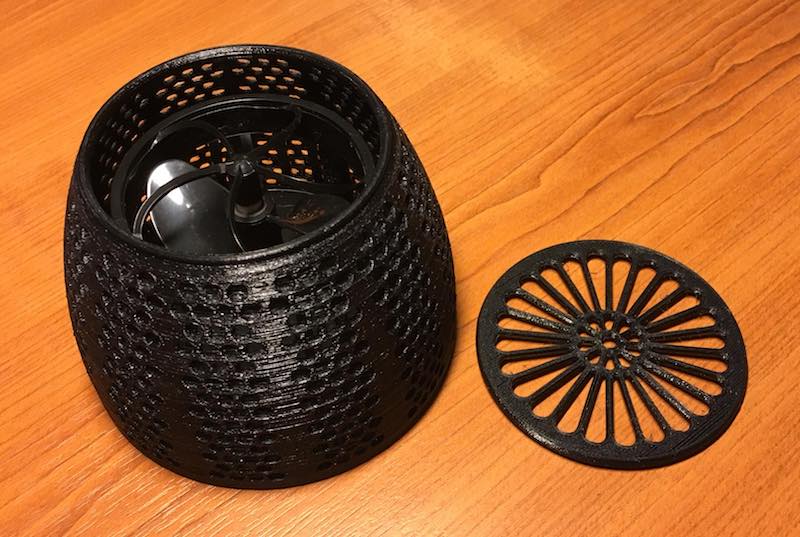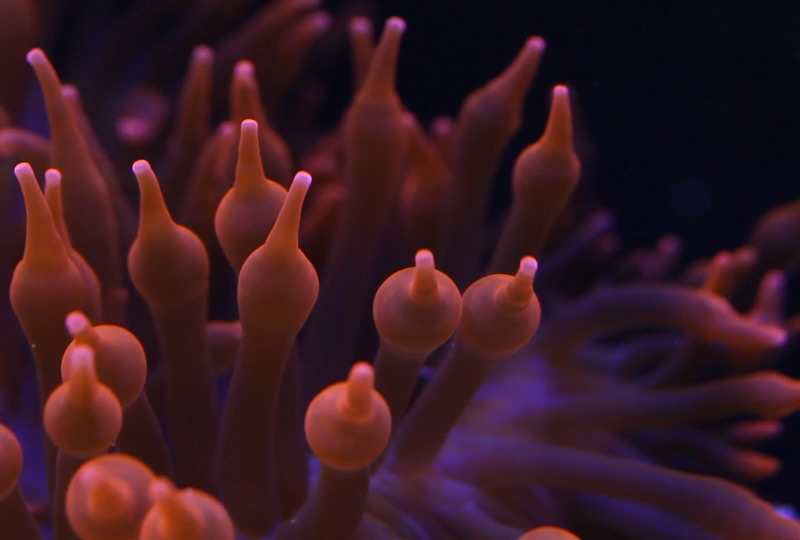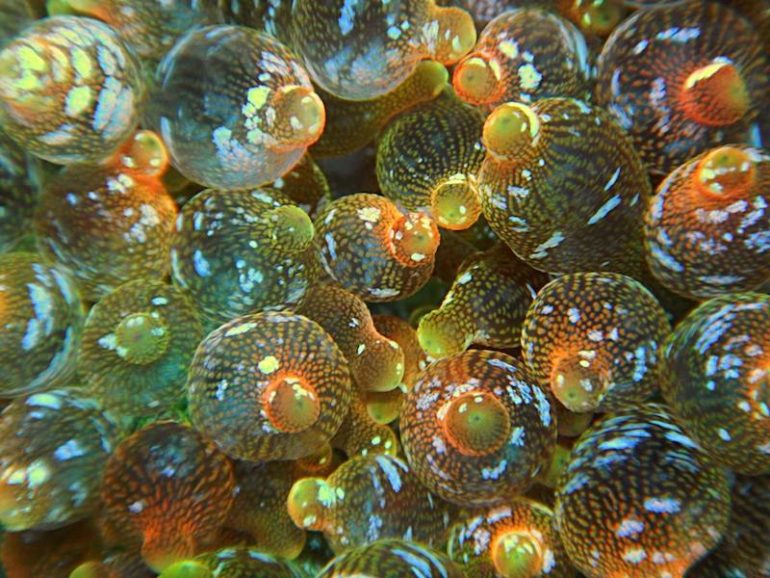Dead anemones are not only a shame, a loss of life, and a financial loss, if not diagnosed and dealt with quickly they can make a real mess of your tank. Here’s what to do if you find a dead or dying anemone in your reef tank.
Watch it
First, you need to ascertain if the anemone is dead or not. A shrunken or sulking anemone may still be able to be saved by improving light, flow, and water chemistry, or removing any creatures that are attacking it. Take a look at the animal in the tank. Is it still stuck there and just in a tight little ball? Or are bits of its flesh rotting and releasing into the water? A healthy anemone should stick to a rock or the tank glass. Unhealthy, unhappy anemones may float around in the water. A floating anemone is a bad sign.
If the animal looks like it is rotting in the water, and the tank is cloudy with bits in the water, you need to remove the nem. Any visible signs of it disintegrating and it must be removed in its entirety and disposed of. It will be dead, and will not recover.

In a worst-case scenario, a dead anemone will disintegrate, leaving slime and yogurt or vomit-like goo in the tank. This is bad, so remove what’s left of the creature with a fine fish-catching net or a fish bag and do what you can to net out or siphon out all of the bits. Make sure you have adequate mechanical filtration and powerful protein skimming to remove any more dead anemone from the water. A rotted anemone can turn to liquid, polluting the tank and stripping the water of oxygen.
Smell it
If the animal is still intact but looking pretty dead or floating around the tank, catch it in a net, bring it to the surface, and smell it. A live anemone should smell like a coral does, or like the sea. Slimy, but bearable. A dead, necrotic nem is one of the worst smells you’ll ever experience and may make you wretch. If the stench is absolutely honking, throw it away and again, siphon out or net out any bits left behind.
My anemone is stuck in my wave pump. What should I do?
Turn the wavepump off and do the sight and smell tests. A wavepump can damage and even mutilate an anemone but it may still be alive and can sometimes recover. Float the anemone in a fish acclimation box or a large shroom box, observe over the following days, and see if the damaged area starts to recover.
If the nem is dead, falling to bits, and being distributed around the tank, turn the pump off, siphon off what you can, take out and clean the pump, and ensure that fish have not been affected by lowered oxygen levels and/or ammonia levels.
Only unhappy anemones go walkabouts as a healthy nem should never expose its foot. Check water flow, light, and water chemistry, as anemones need the same conditions our corals do.

Nem guards are available from some manufacturers and third-party suppliers and can help prevent anemones, small fish, and mobile inverts from being sucked in and macerated by wave pumps, but a healthy, happy nem should stay where you put it, in the rockwork or sandbed, and away from filter inlets and wave pump inlet strainers.
Choose the right species of anemone
There are many species of anemone available to the reefkeeper but most are a poor choice and have very low survival rates in captivity. Unless you have otherworldly reefkeeping skills, avoid all Heteractis, Macrodactyla, Stichodactyla, and Condylactis species – that means nearly all the anemones available!
They are all wild collected, travel, and acclimate badly. For a creature that can in theory live forever in the wild, the mortality rate of Malu, Ritteri/Magnificent, Corkscrew, and Carpet anemones is very high indeed.

One species however, the humble Bubble Tip anemone, Entacmaea quadricolor, is colorful, hardy, will host clownfish, and reproduces readily in the home reef tank. Buy a red bubble tip that has split from the original in someone else’s tank and you will almost certainly avoid most or all of the above scenarios.
The 10 Golden rules of dealing with dead anemones
- Check it really is dead first, with sight and smell
- Turn off wave pumps
- Remove what you can with a fish net and discard
- Syphon out all traces of anemone flesh and particles from the main tank
- Use mechanical filtration to trap any particles, cleaning regularly
- Use heavy protein skimming (skim wet,) to remove what’s left
- Check the fish are breathing okay
- Test the water
- Conduct a large water change
- Run some carbon
Decaying anemones can kill fish, even in large, mature reef tanks. If the fish are breathing heavily, test for ammonia, increase surface agitation/add aeration, and be ready to conduct a large partial water change. In extreme circumstances, the lethargic or dying fish can be caught with a net and moved to a separate tank, or a bucket of clean, premade, prewarmed saltwater, aerated with an airstone.



